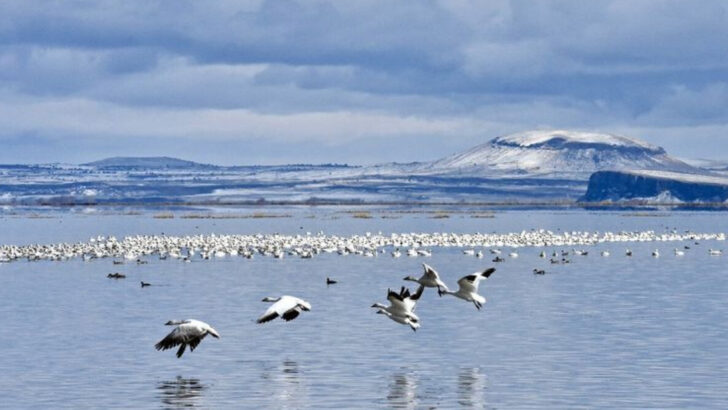Some birds are so stunning, they make you question reality.
We’re talking flashes of electric blue, fiery reds, and patterns so perfect they look painted by hand. And the West Coast? It’s their runway.
From misty forests to sun-baked cliffs, these feathered wonders show up where you least expect them—if you know where to look.
But this isn’t just about pretty wings. This is a journey into hidden havens, migration secrets, and the thrill of spotting a species few ever see.
So grab your binoculars. The birds are waiting, and they’re dressed to impress.
Point Reyes National Seashore, California
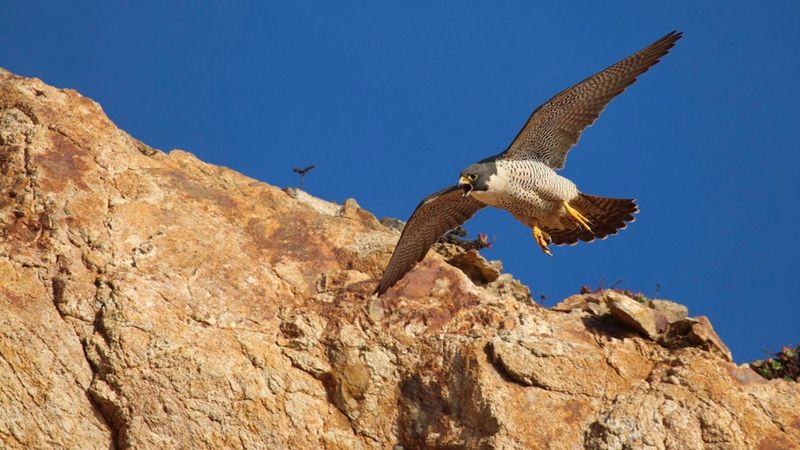
Welcome to Point Reyes, where the air is alive with the colors of avian life. This stunning seashore is a hotspot for birdwatchers. With over 490 species recorded, it’s a paradise for those seeking diversity. As you stroll along the coastal trails, keep an eye out for the elusive Spotted Owl and vibrant Northern Harrier.
The area’s varied habitats, including grasslands and forests, provide a rich tapestry of birdlife. Imagine the thrill of spotting a Peregrine Falcon diving at breathtaking speeds. Point Reyes is not just a destination; it’s an exploration into the wonders of the avian world.
Cape Flattery, Washington
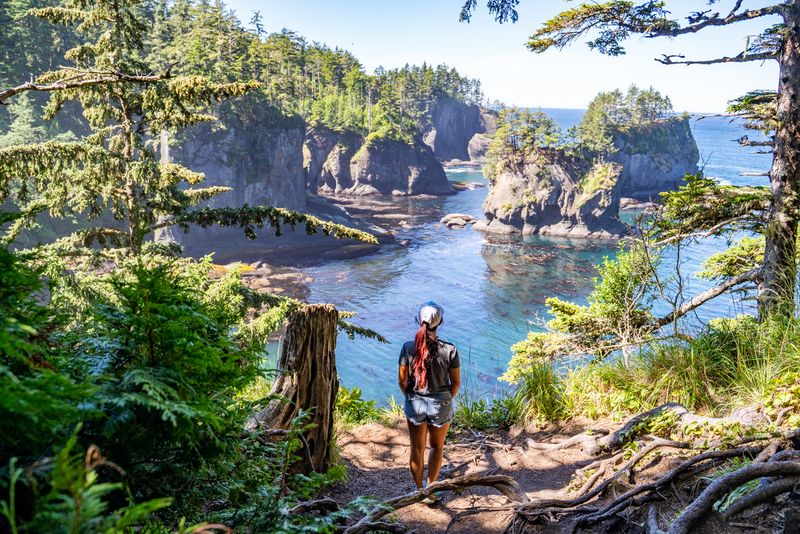
Cape Flattery is a hidden gem at the northwestern tip of the continental U.S. It’s renowned for its breathtaking scenery and rich birdlife. Here, seabirds like the Tufted Puffin and Rhinoceros Auklet find sanctuary along the rugged cliffs.
The swirling mists and crashing waves create a dramatic backdrop for one of nature’s great spectacles. Birdwatchers can also spot Bald Eagles soaring majestically overhead.
This unique location, where land meets sea, offers a rare glimpse into the diverse ecosystem that supports both marine and avian life. A visit here is both an adventure and an education.
Salton Sea, California
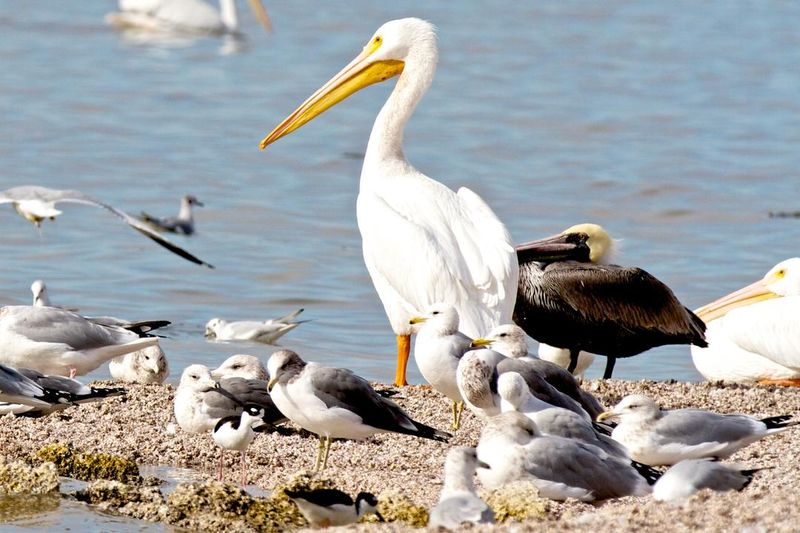
In the arid heart of California lies the Salton Sea, an oasis for migrating birds. This inland sea is a crucial stopover for over 400 species, including the American White Pelican and Black-necked Stilt.
The vast waters and surrounding desert create a surreal landscape that attracts birdwatchers from around the globe. Imagine standing by the shore as thousands of birds take flight, their wings painting the sky.
The Salton Sea is not only a birdwatching haven but also a reminder of nature’s resilience in an ever-changing environment. Every visit offers a new perspective on the delicate balance of desert life.
Malheur National Wildlife Refuge, Oregon
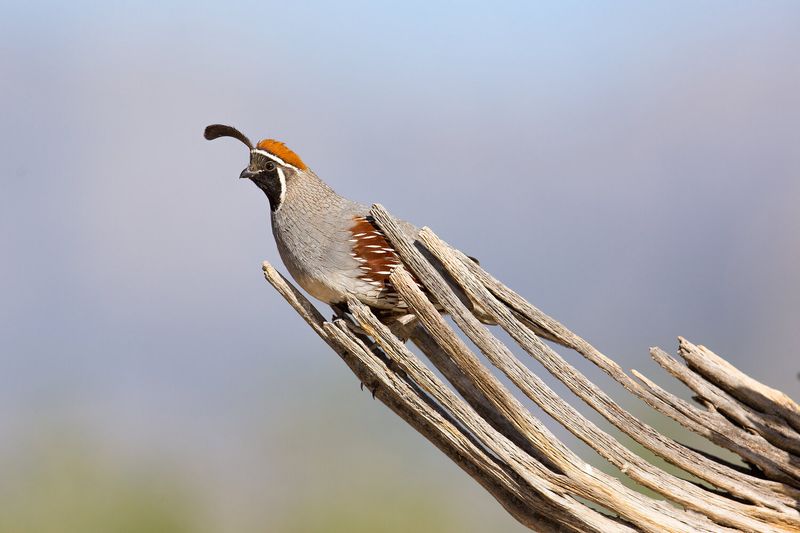
Malheur is a name that resonates with bird enthusiasts. Nestled in the high desert of eastern Oregon, this refuge is a sanctuary for countless waterfowl and wading birds. Sandhill Cranes and Snow Geese grace these wetlands with their presence.
The vast, open skies and serene landscapes offer a tranquil escape into nature’s embrace. Birdwatchers can experience the thrill of spotting rare species like the Yellow Rail.
This refuge isn’t just about birdwatching; it’s about connecting with the land and understanding the intricate ecosystems that sustain such rich biodiversity. Malheur is a testament to nature’s quiet majesty.
Klamath Basin, Oregon-California
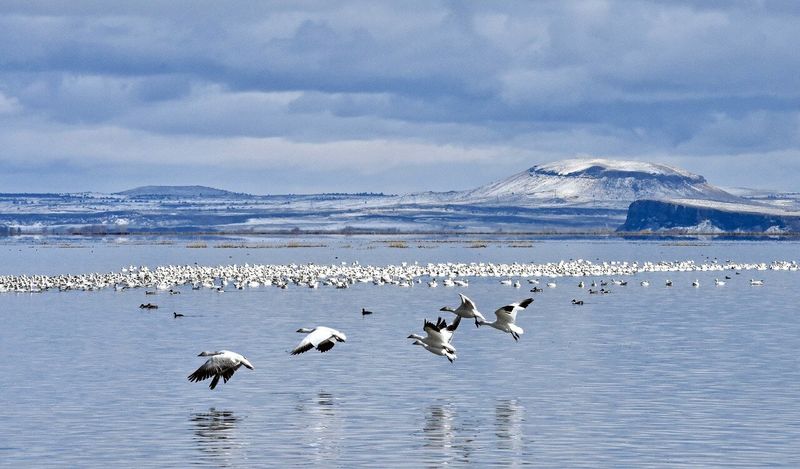
Klamath Basin, straddling the Oregon-California border, is a vital stopover for migratory birds. Over a million waterfowl visit here annually, making it a birdwatcher’s paradise. The wetlands are alive with the sounds of Tundra Swans and Greater White-fronted Geese.
The basin’s rich ecosystems support an astonishing variety of bird species. Imagine the awe of witnessing large flocks ascending into the sky at dawn.
Klamath Basin is not only a haven for birds but also a place where visitors can feel the pulse of migration. It’s a must-visit for anyone passionate about avian wonders and natural beauty.
Puget Sound, Washington
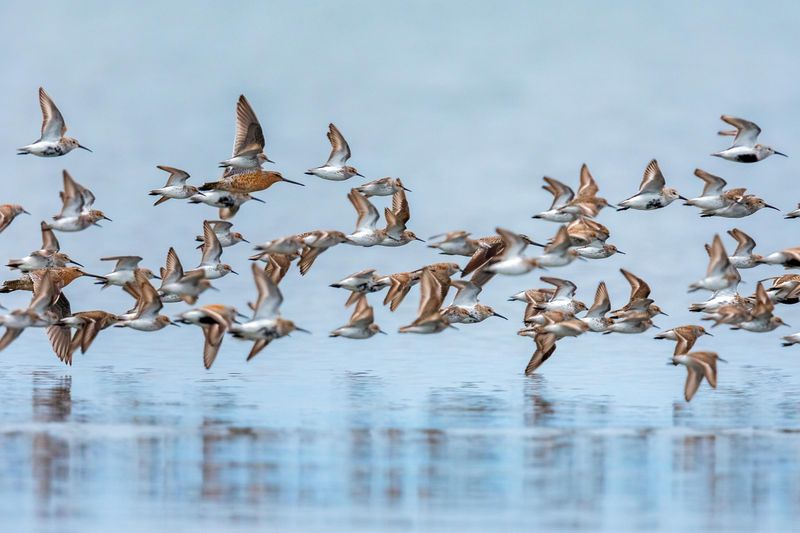
Puget Sound is a mesmerizing blend of water and wilderness. This iconic body of water is home to a rich array of bird species, from the elegant Great Blue Heron to the playful Harlequin Duck.
The sound’s marine environment supports a dynamic avian community, making it a magnet for birdwatchers. The sight of orcas breaching near seabirds is a sight to behold.
Puget Sound offers more than just birdwatching; it’s an experience of nature’s interconnectedness. Visitors can immerse themselves in a world where land, sea, and sky converge in a stunning display of biodiversity and beauty.
Monterey Bay, California
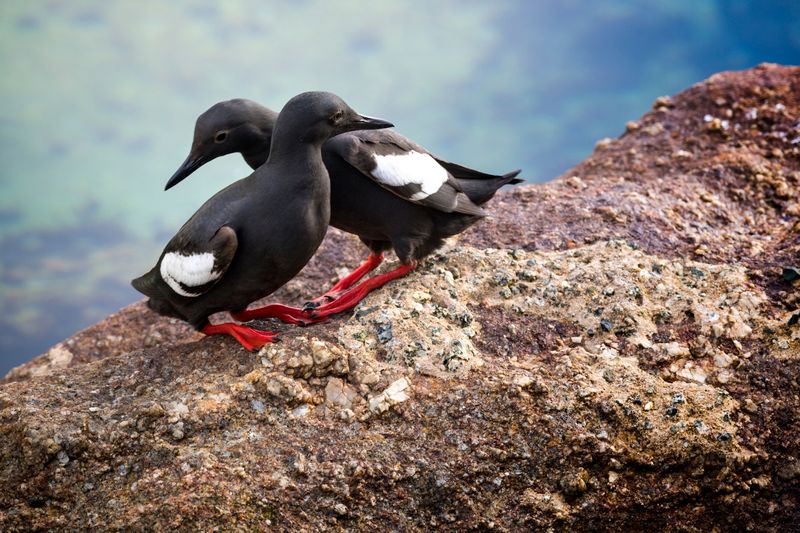
Monterey Bay is synonymous with marine life and birdwatching. This coastal jewel attracts a multitude of seabirds, including the elegant Black-footed Albatross and Common Murre.
The bay’s nutrient-rich waters create a thriving ecosystem, drawing both birds and marine mammals. Imagine watching a feeding frenzy where seabirds and dolphins share the bounty of the sea.
Monterey Bay offers a unique opportunity to witness the interplay between ocean currents and wildlife. It’s a place where birdwatchers can experience the thrill of discovery amid the natural splendor of the California coast.
Columbia River Gorge, Oregon-Washington
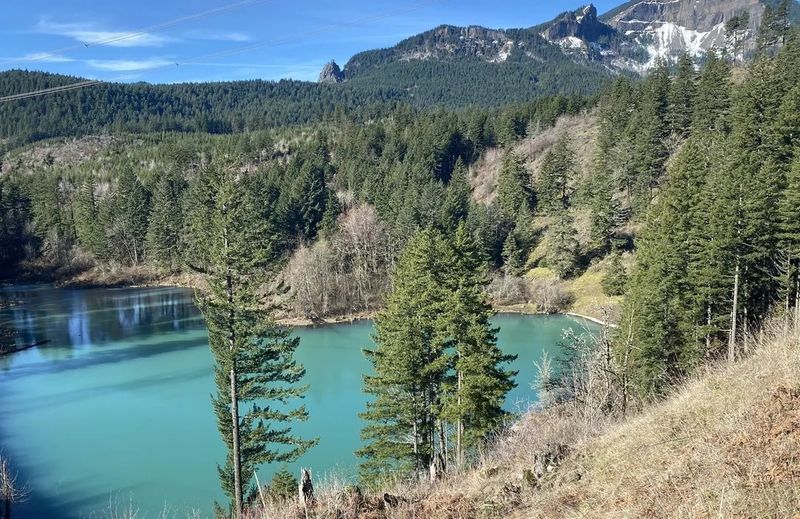
The Columbia River Gorge is a dramatic landscape of cliffs and canyons, home to a diverse range of birds. Raptors like the Peregrine Falcon and Osprey soar high above, taking advantage of the thermals.
Birdwatchers are drawn to the gorge’s unique blend of habitats, from lush forests to open grasslands. The area’s beauty is matched by the thrill of spotting rare species.
The Columbia River Gorge is a place of contrasts, where powerful winds and gentle breezes shape the environment. Every visit is a journey into the heart of nature’s raw and unfiltered essence.
San Francisco Bay, California
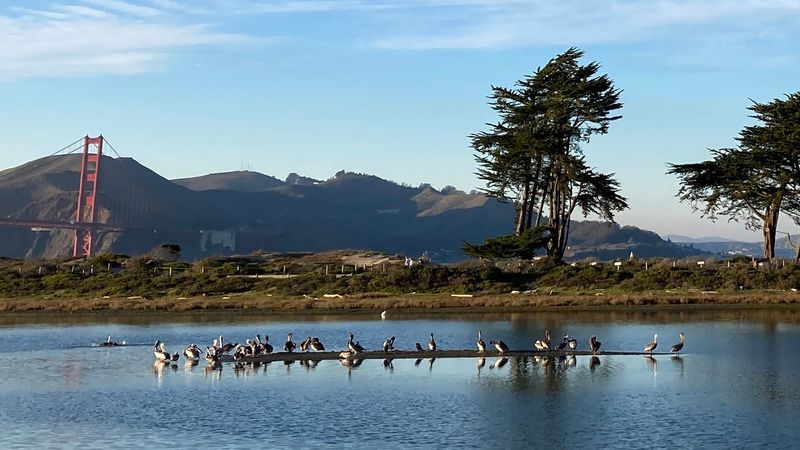
San Francisco Bay is a bustling hub of avian activity. The bay’s tidal mudflats and marshes are vital feeding grounds for shorebirds like the Western Sandpiper and Long-billed Curlew.
The juxtaposition of urban life and natural beauty creates a unique birdwatching experience. Imagine the sight of graceful birds gliding against the backdrop of the Golden Gate Bridge.
San Francisco Bay is more than just a birding location; it’s a testament to nature’s resilience amidst urban expansion. Birdwatchers can explore a vibrant ecosystem thriving alongside a bustling metropolis.
Los Angeles River, California
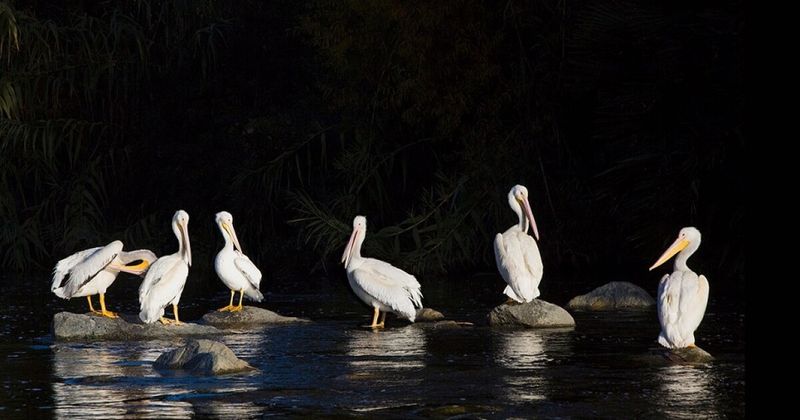
Amidst the urban sprawl of Los Angeles lies the revitalized Los Angeles River, a surprising haven for birds. The river’s restoration has created a habitat teeming with life, attracting species such as the Black-crowned Night Heron and Snowy Egret.
The juxtaposition of city and nature offers a unique birdwatching experience. Imagine the serenity of watching birds in flight against a backdrop of skyscrapers.
The Los Angeles River is a testament to ecological restoration and the return of wildlife to urban areas. It’s a place where nature reclaims its space, offering hope for the future of urban biodiversity.
Olympic National Park, Washington
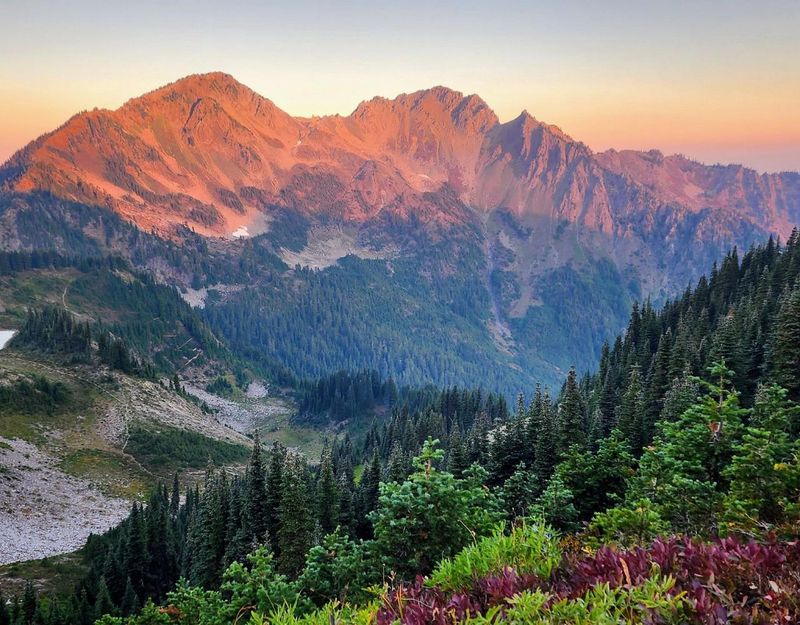
Olympic National Park is a realm of untouched wilderness. Its ancient forests and rugged peaks host a diverse avian community, from the charismatic Varied Thrush to the elusive Marbled Murrelet.
The park’s varied ecosystems, including old-growth forests and alpine meadows, provide a rich tapestry of habitats for birds. The chorus of bird songs fills the air, creating a symphony of nature.
Olympic National Park offers more than just birdwatching; it’s an invitation to explore the wild heart of the Pacific Northwest. Here, every visit is a journey into the depths of nature’s grandeur.
Channel Islands National Park, California
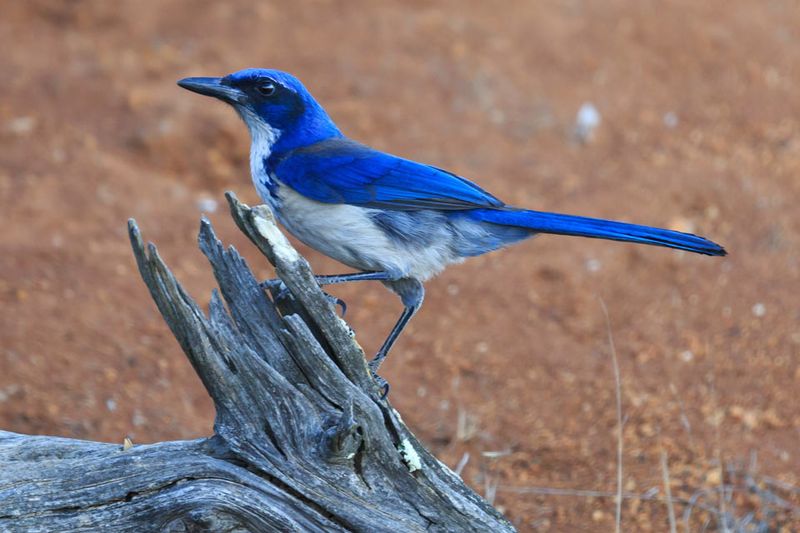
Channel Islands National Park is a sanctuary of rare beauty. Its isolation has preserved endemic species like the Island Scrub-Jay, found nowhere else on earth.
The park’s rugged coastlines and serene beaches offer breathtaking vistas for birdwatchers. Imagine the thrill of encountering a species unique to this remote archipelago.
Channel Islands is not just a park; it’s a glimpse into a world that time forgot. Birdwatchers can explore a unique ecosystem that has evolved in isolation, offering a rare opportunity to witness nature’s adaptability and resilience.
Redwood National and State Parks, California
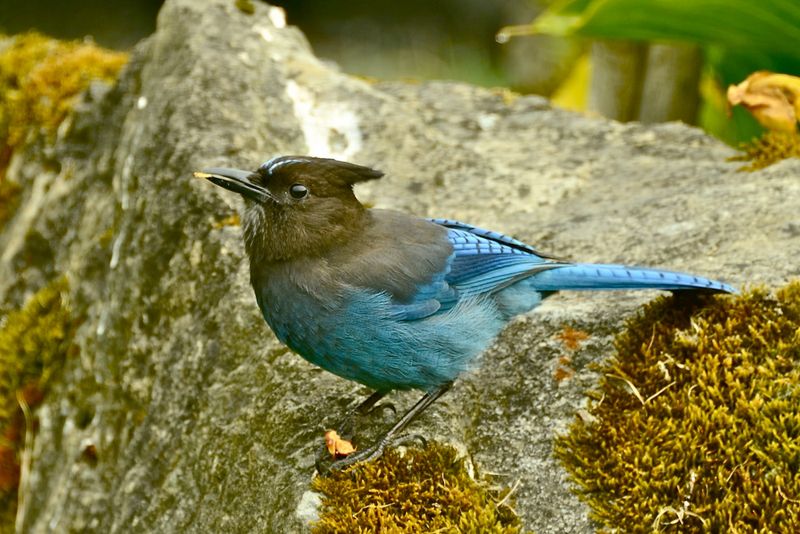
In the shadow of ancient giants, Redwood National and State Parks offer a unique birdwatching experience. The towering redwoods create a cathedral-like setting, home to birds such as the Marbled Murrelet and Northern Pygmy Owl.
The serene atmosphere of the forest is punctuated by the calls of these avian inhabitants. Visitors can explore networks of trails that weave through this enchanting landscape.
Redwood Parks are not just about trees; they’re about the delicate ecosystems they support. Birdwatchers can immerse themselves in a world where time stands still, surrounded by the whispers of nature’s grandeur.
Mt. Rainier National Park, Washington
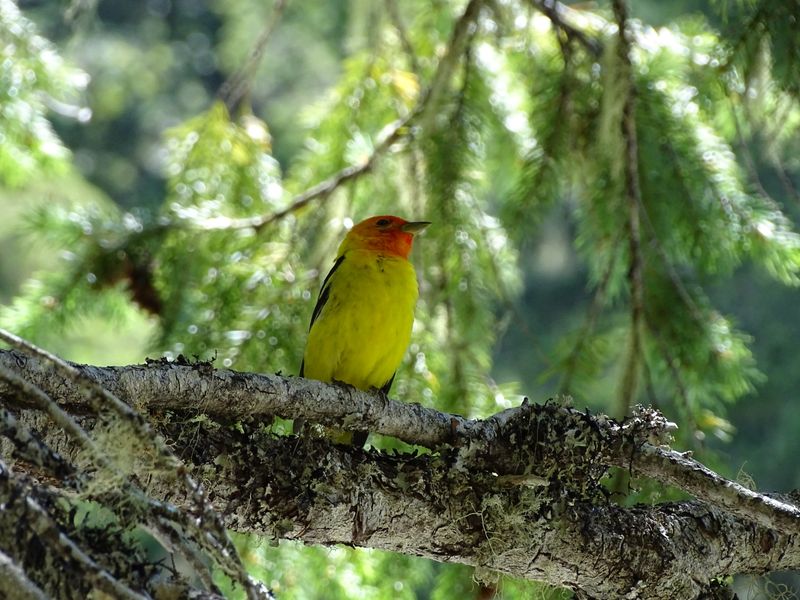
Mt. Rainier National Park is a land of contrasts. Its snow-capped peaks and lush valleys provide a haven for birds like the White-tailed Ptarmigan and Clark’s Nutcracker.
The park’s alpine meadows burst into color during the summer, attracting a vibrant array of bird species. Imagine the awe of spotting a Mountain Bluebird against a backdrop of glaciers.
Mt. Rainier is not just a destination; it’s a testament to nature’s grandeur. Birdwatchers can explore varied habitats, each offering its own unique avian wonders. It’s a place where every turn reveals a new facet of the natural world.
Anza-Borrego Desert State Park, California
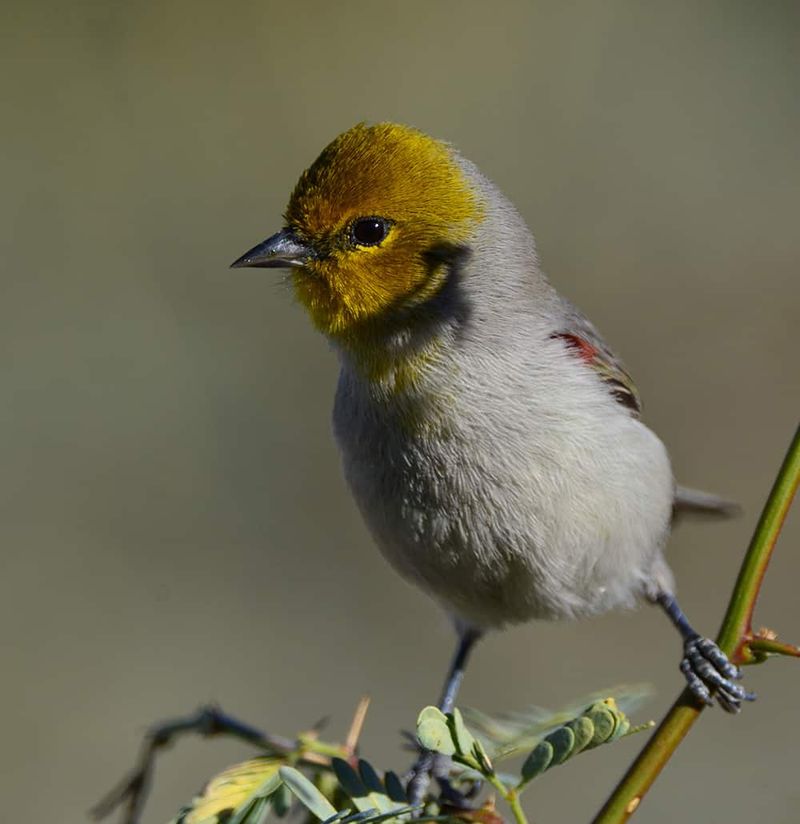
Anza-Borrego Desert State Park is a place of stark beauty and hidden life. In this arid landscape, resilient bird species like the Black-throated Sparrow and Cactus Wren thrive.
The desert’s vastness offers a unique birdwatching experience, where the silence is broken only by the calls of its avian residents. Imagine the wonder of discovering life in such a seemingly inhospitable place.
Anza-Borrego is a reminder of nature’s adaptability and the surprising diversity of desert ecosystems. Birdwatchers can explore this expansive landscape, uncovering the secrets of survival in the desert.

